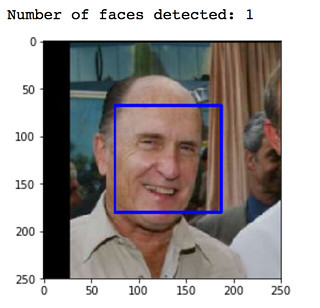Deep learning to detect faces in pictures


//embedr.flickr.com/assets/client-code.js
I was fascinated when Facebook launched the feature where it put a box around a human head (and a bit creeped out when it started suggesting the name of the human next to the box). I always wondered how they did it and filed it under machine-learning magic-ery. Now, I know how they do it so let me peel back the curtain.
There are two distinct problem domains in the feature
- Find the human - we will use this blog lifting the curtain behind the magic.
- Label the human - this is supervised machine learning and we will ignore this problem in the blog.
The "Find the human" problem is solved through something called "Haar Cascade Classifiers" - detailed article for brilliant humans [link here](https://docs.opencv.org/3.3.0/d7/d8b/tutorial_py_face_detection.html) and the rest follow along in this blog :-).
The underlying building block is a Classifier but lets drop the terminology and use airport security as a metaphor to explain the process.
Think of face detection solution as a airport security problem where a series of security guards each do a specialised task. The guard at the airport entrance is responsible to ensure that there is no suspicious car loitering around the airport. The guard at the security gate is responsible for letting ones with a valid id and a boarding ticket. The person behind the scanner is responsible to weed out any harmful objects in the handbag. The person behind the scanning machine ensures that no person gets in with a gun. The explosives security person uses a specialised explosive detector paper and puts in the machine to find out if hidden explosives are carried by the person under consideration.
Each of this security guard is a Classifier and classifies a particular threat. When each is put together in a series, we get a Cascade of Classifiers. Each building on the work of the other. Each and everyone of them has to perform their specialised task for a successful outcome. The successful outcome in this case is that a person was allowed into the airport lounge and can board his/her plane. Each of the classifier goes through a great deal of specialised training for it to perform their task. Makes sense?
So lets apply this metaphor to face detection machine-learning algorithm. In ML, each classifier focusses on a special feature within a picture. The basic classifier tells something as simple as “this is a horizontal edge” or “this is a vertical edge” where edge detection is a feature. This classifier feeds into another one that perhaps says “this is a square” and so on so forth. Eventually, you get to a classifier that tells you “this is a bridge of the nose” or “these are eyes”. Each classifier has been fed 100s of thousands of images that are either positive (human in the picture) or negative (no human in the picture) for it to learn to correctly classify the pictures.
So how many such features are there? Turns out a whole lot. For a typical 24x24 pixel, there are 160k+ features. The Haar in the “Haar based classifier” is a mathematical function that optimises this algorithm and reduces the number of features to look out for to about 6k.
Now it turns out that applying this knowledge into our programs is a lot simpler than the entire training process because opencv.org provides a python package called opencv to detect these pictures.
I ran a short function to detect humans in about 100 pictures with humans and ended up with a 100% detection rate - not bad at all. Running it over 100 dog pictures ended up returning a 89% accuracy rate. Thus, 11% of dogs were categorised as humans and if you know me - I think that is fair because some dogs are like humans :-).
My github repo here if you want to see the code, although you can find it on the Haar based Classifier link as well.